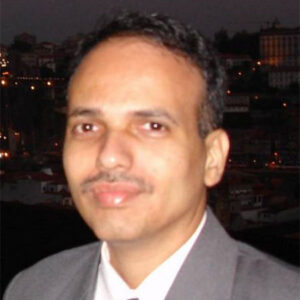Shrikrishna Kulkarni
Home / Shrikrishna Kulkarni
Presentations:
Transformer-System Interactions and Modeling
Transformers are important components of power systems which often become vulnerable to transient overvoltages. Steeply increasing voltage transients associated with gas-insulated substations can be detrimental to bushing and windings. Transformers are also affected by many steady-state operating conditions like unbalanced operations, harmonics and ferroresonances. In addition, several unexpected phenomena or failures involving transformers are reported in literature due to their interactions with connected power network. For analyzing these interactions and suitably designing transformers, accurate modeling of magnetic circuits and windings is essential. Frequency-dependent properties of their materials need to be taken into account if required. Depending upon the frequency region of interest, models can be conveniently simplified to reduce computational efforts. In this talk, a few case studies on modeling of transformers for analyzing their different system interactions are presented.
Transformers Design Principles and Advanced FEM Analysis
This tutorial starts with a typical design procedure of a power transformer (3-phase, 31.5 MVA, 132/33 kV), which covers broad electrical aspects involved in its design. In addition to describing important principles and operational aspects, step-by-step design procedure is elaborated starting with magnetic circuit followed by windings and insulation. After evaluating the leakage reactance by an approximate analytical formula, the losses in core, LV and HV windings and the parameters of the equivalent circuit of the transformer are determined. Subsequently, conflicting requirements for various engineering aspects (electromagnetic, thermal, mechanical) of design are enumerated. Limits on design variables imposed by temperature rise considerations, manufacturing processes, and transport restrictions are highlighted. Some of the performance figures like eddy and stray losses in windings and structural parts cannot be accurately determined by analytical formulae, necessitating use of Finite Element Method (FEM) for the purpose. Similarly, for determining response to transient overvoltages involving very high frequencies, detailed modeling of windings is essential. The equivalent circuit parameters for accurate transient analysis can be calculated using FEM. Basics of FEM formulations useful for design and analysis of transformers will be covered. Many complex phenomena in transformers involve interactions between electromagnetic fields and connected circuits and/or other physical fields (thermal, mechanical, fluid, and acoustic). A few case studies will be presented at the end which use coupled field computations in solving challenging problems encountered while designing and analyzing transformers.
Applications and Design of Magnetic Devices for High-Frequency Power Electronic Circuits
Magnetic components like inductors and transformers are essential parts of power electronic circuits. They are used for galvanic isolation, voltage transformation, filters, etc. The size and overall dimensions of the circuit depend on how efficiently these components are designed and manufactured. Main requirements in designing these components are low losses and high power density with compact dimensions. Selection of core geometry and its magnetic material with desirable saturation magnetic flux density is the most important design step. Hysteresis, eddy and anomalous components make the total magnetic loss. Skin and proximity losses in windings can become critical at high frequencies. To overcome these challenges, relevant electromagnetic concepts including theory of eddy currents need to be properly understood. This talk focuses on such fundamental aspects in addition to design of magnetic circuits and coils for high frequency applications. Finally, steps in design of a high frequency inductor are elaborated.
© Copyright 2023 IEEE — All rights reserved. A not-for-profit organization, IEEE is the world’s largest technical professional organization dedicated to advancing technology for the benefit of humanity.


